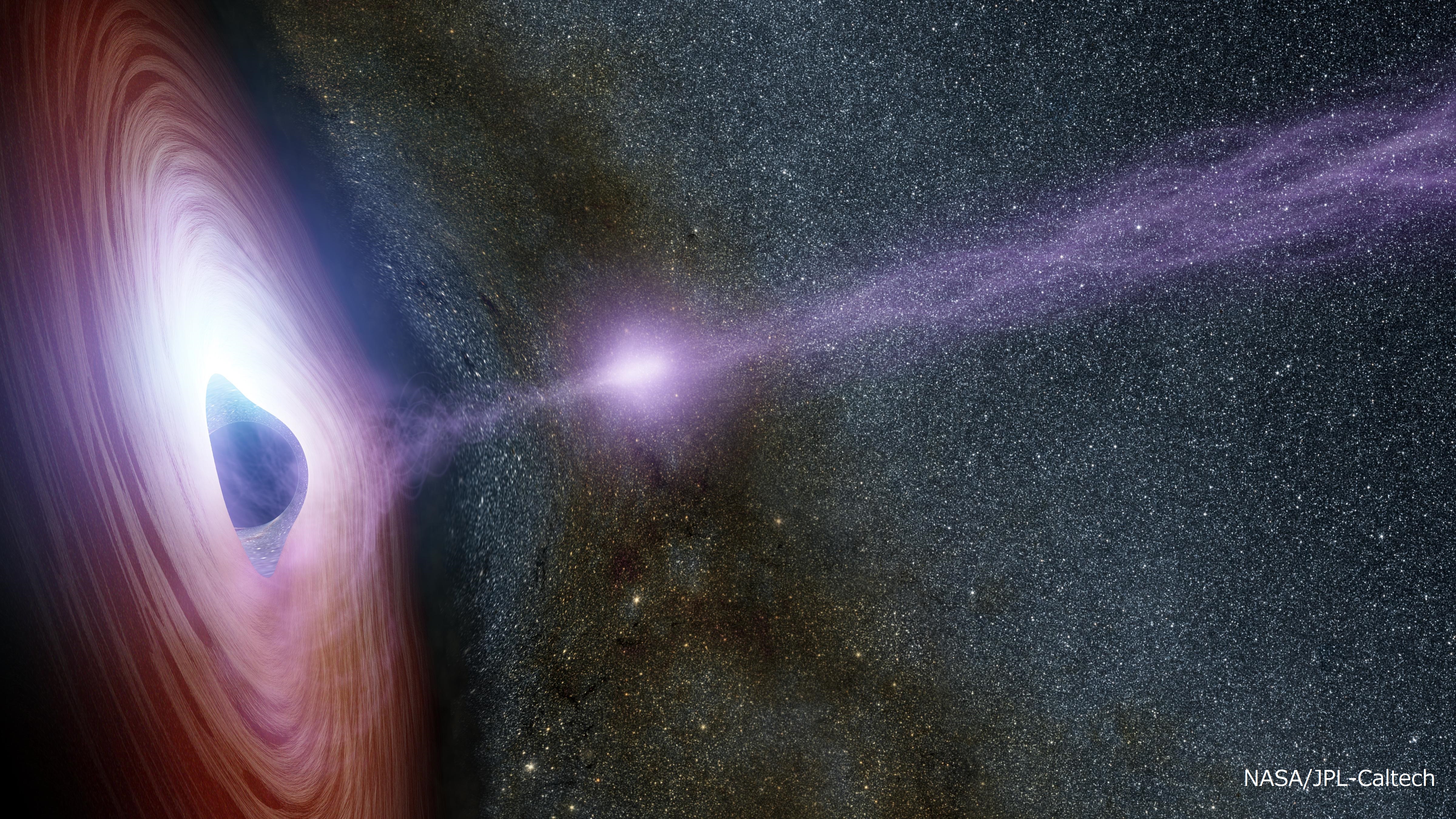Research

Research Subjects in our Group
Astrophysics research at our group of Tokyo Metropolitan University (TMU) covers the fields of high-energy astrophysics and observational cosmology related to the structure formation of the universe. Astronomical systems of interest include supernova and supernova remnants, neutron stars, black holes, gamma-ray bursts, galaxies and clusters of galaxies, interstellar medium, and intracluster medium. For understanding the properties of such objects and their activities, particularly high-energy phenomena in the relativistic regime, we also study fundamental physical processes: particle acceleration and collisions, radiation and transport, etc. We are joining the XRISM X-ray satellite project as a core member.
Supernova Remnants
Supernova remnant (SNR) is a shock-heated hot plasma formed by the interaction of supernova ejecta with ambient matter, following supernova explosion. Cosmic-rays (CRs) are accelerated at the shock surrounding the SNR. We have investigated the propagation of those CRs in interstellar space. We found that the CRs generate fluctuations of magnetic fields in interstellar space, and as a result, the motion of the CRs are disturbed and they are confined around the SNR for a long time. CRs with GeV and TeV energies generate gamma-rays through proton-proton interaction in molecular clouds. Moreover, those with MeV energies create an X-ray iron line in the molecular clouds. We studied these processes by comparing theoretical models with observations. We also found that CRs accelerated at SNRs near the Earth generate an anomaly of electron-positron fraction.
Clusters of Galaxies
Cluster of galaxies is a self-gravity system which consists of 10 to 1000 galaxies, hot gas (called intracluster gas) and dark matter. In typical virialized clusters, the gas temperature is comparable with the gravitational potential, which is formed mainly by the dark matter; the mass ratios of dark matter and gas to galaxies are ~30 and ~5, respectively. The cluster mass can be estimated from X-ray observations by assuming that the intracluster gas is in a hydrostatic balance. We have investigated the validity of this manner by hydrodynamical simulations, and found that the mass thus estimated was smaller than the true mass because of the accelerated term in the Euler equation. The intracluster gas radiatively cools with time, and the time scale is shorter in a cluster core than the Hubble time. Hence, outer hot gas could flow into the core to compensate lowering pressure. If such an inflow occurred drastically, a large amount of cold gas would be observed in the core center, but no evidence has been found. We proposed a model in which the core is heated by CRs accelerated at the active galactic nucleus at the cluster center. Based on this model, we calculated the profiles of the electron temperature, density, gas pressure and entropy and compared the calculated profiles with observations. We found that our model can explain those profiles, and showed that the CR heating is stable. We also studied CR acceleration by turbulence in the intracluster gas. We showed that observed radio spectra are consistent with the prediction of this model.
Active Galactic Nuclei
Most galaxies have supermassive black holes at their centers. The black holes swallow the surrounding gas, releasing an enormous amount of energy in the process. These black holes are called active galactic nuclei (AGN). To study the gas accretion process, we observe AGNs with telescopes such as ALMA. We also study the energy production mechanism of AGNs theoretically.
Other Ongoing Research Subjects
We are also studying non-thermal emissions from gamma-ray binaries and the origin of PeV cosmic-rays.
